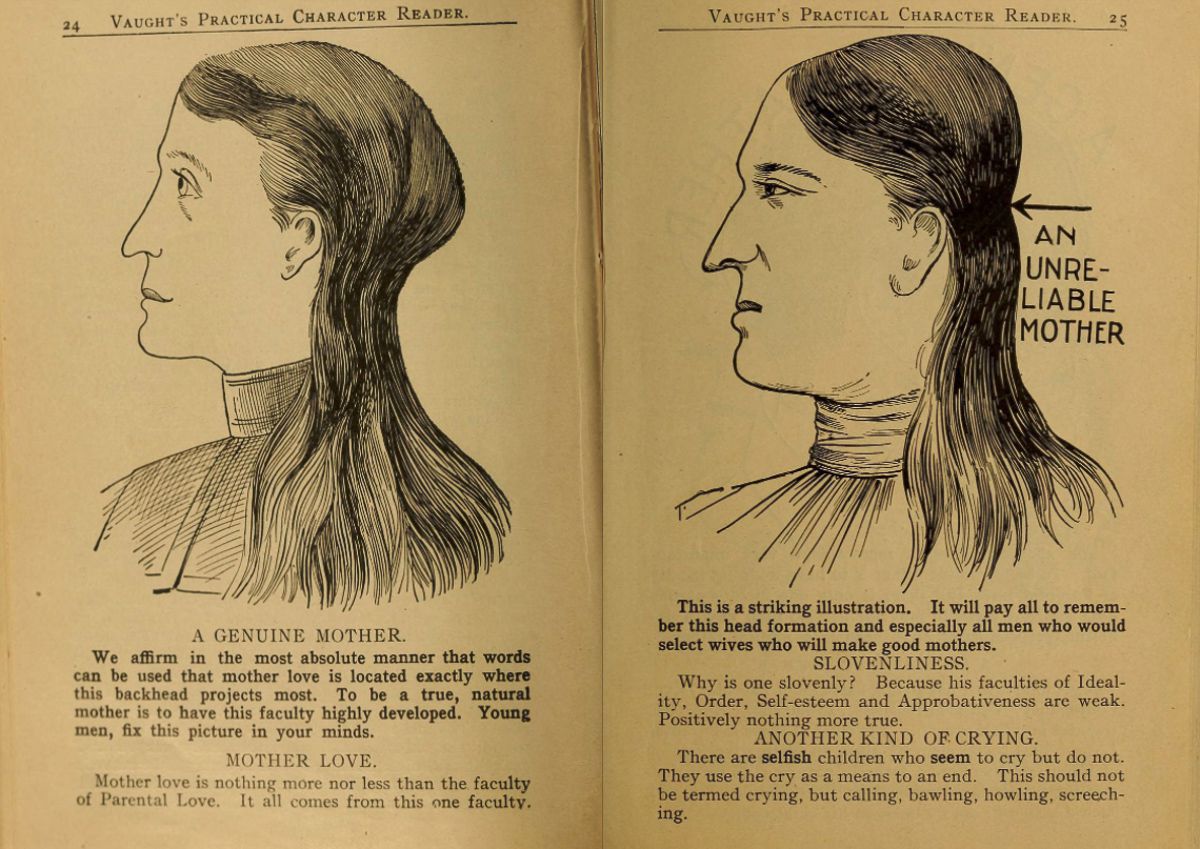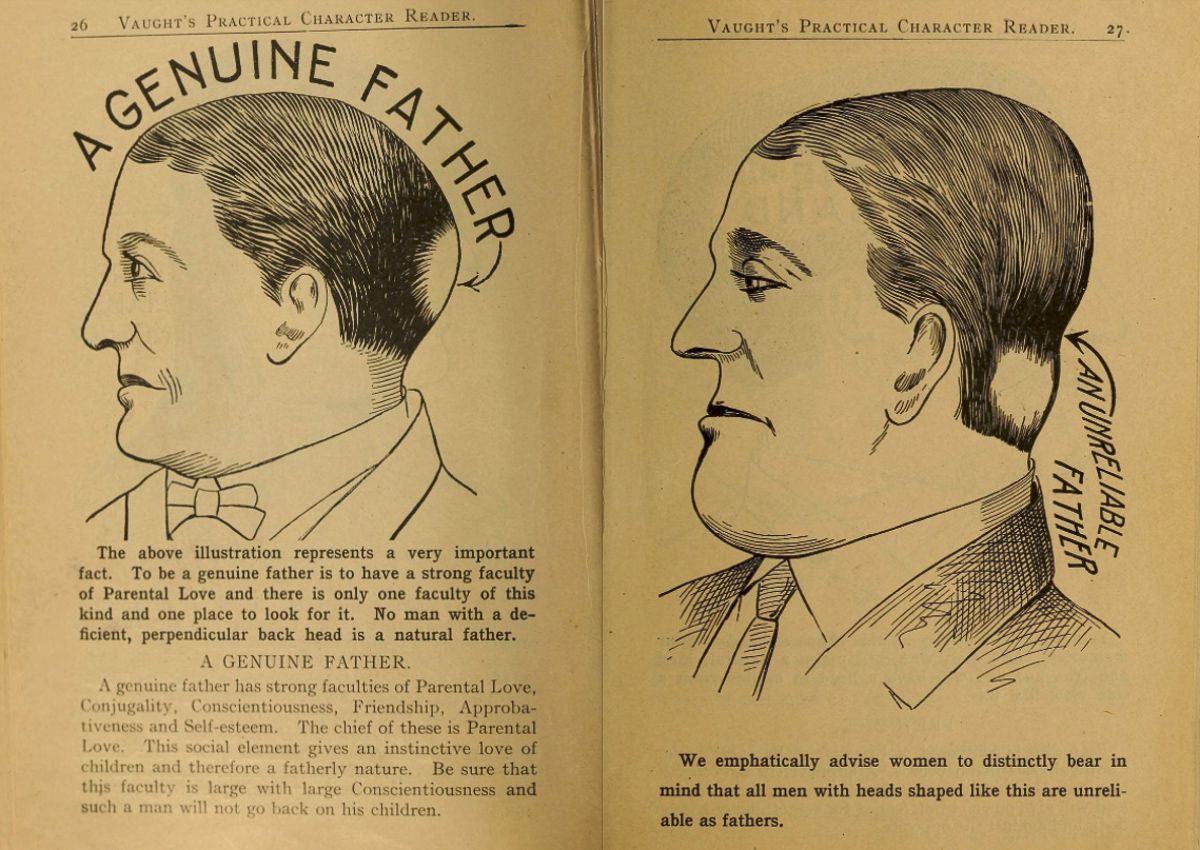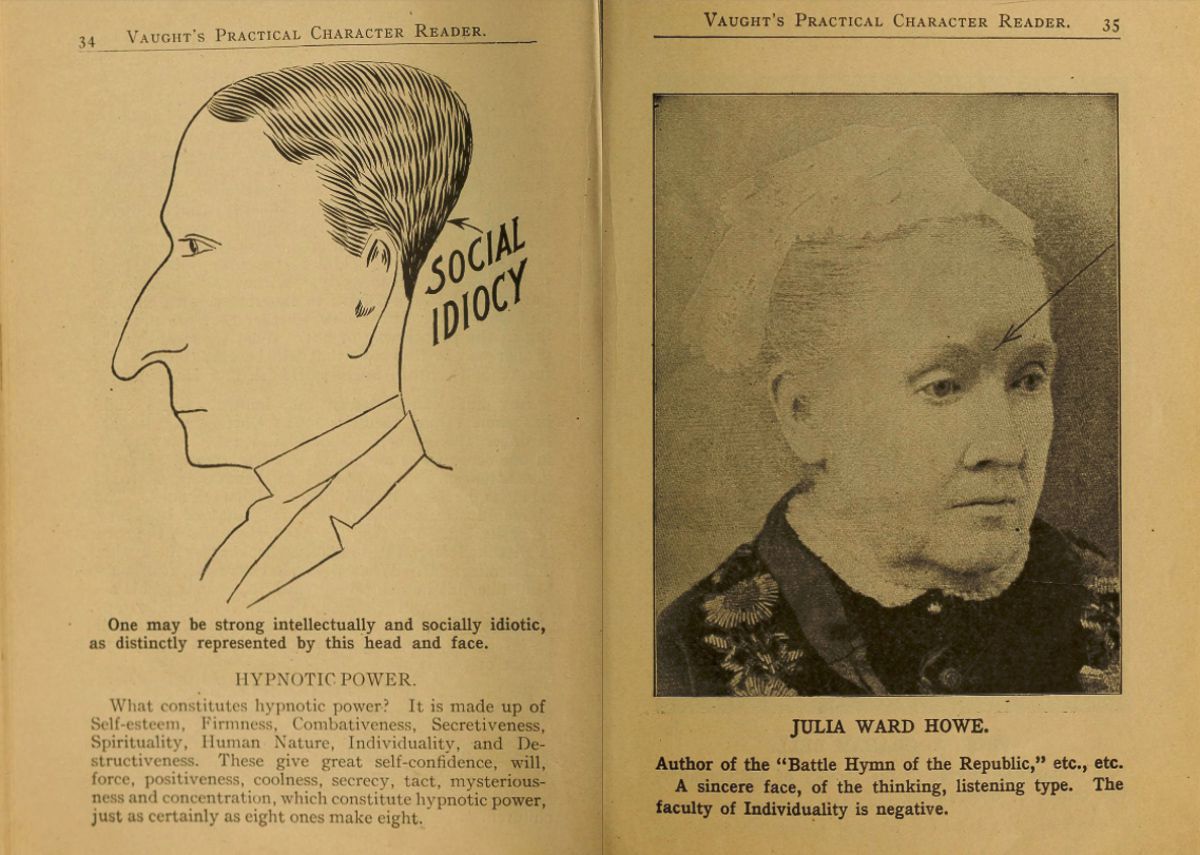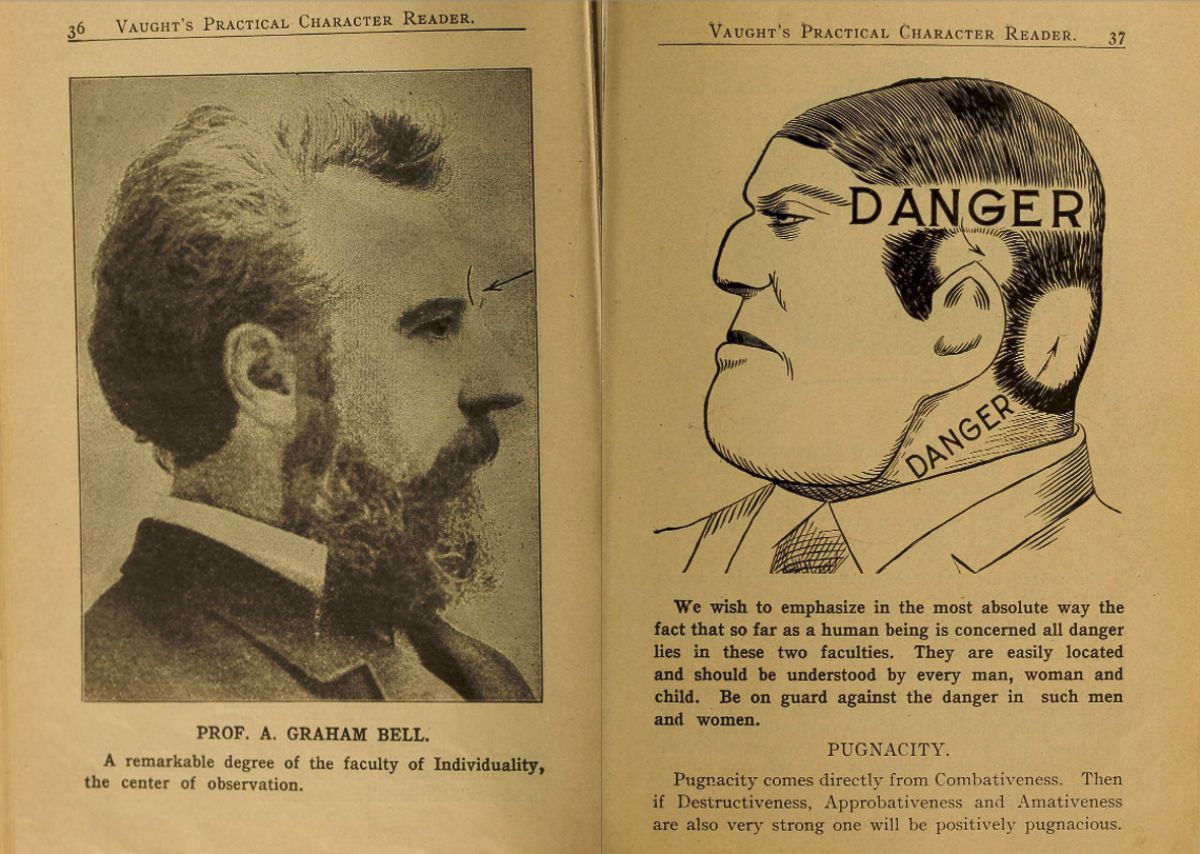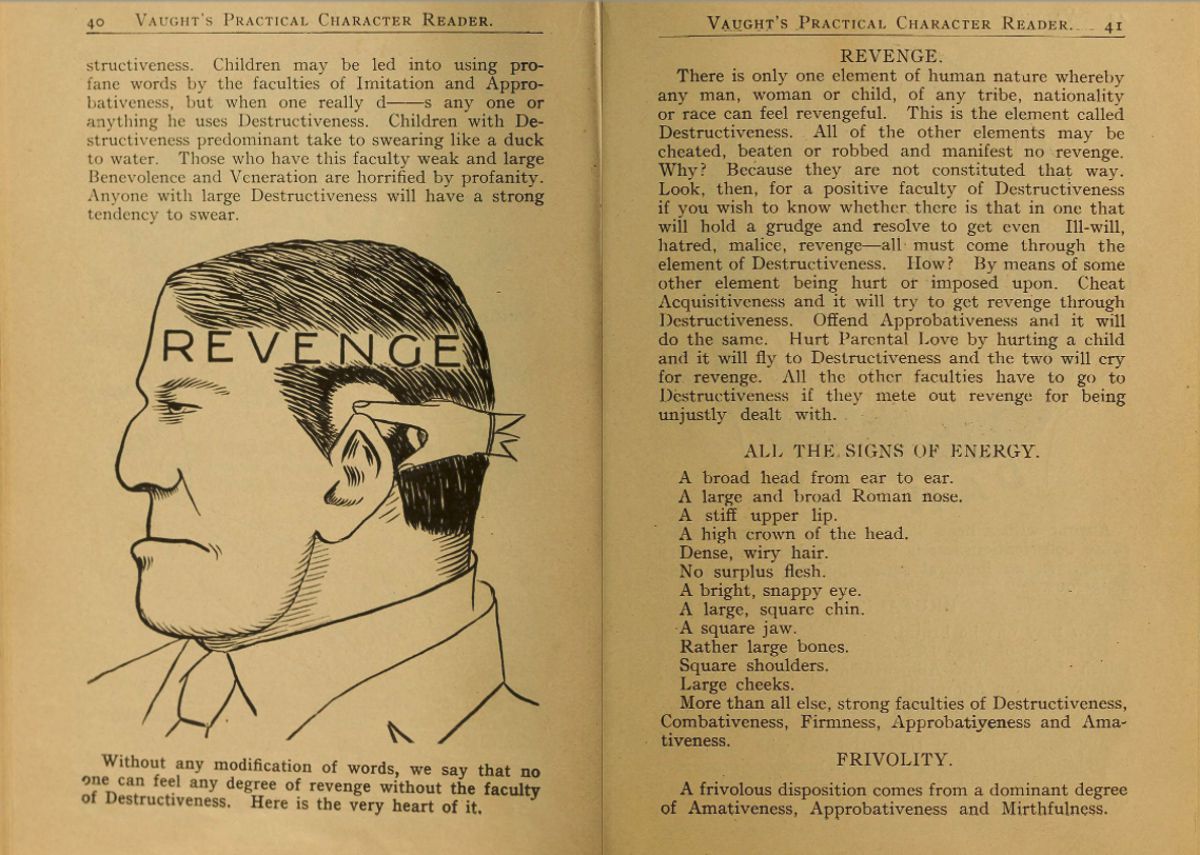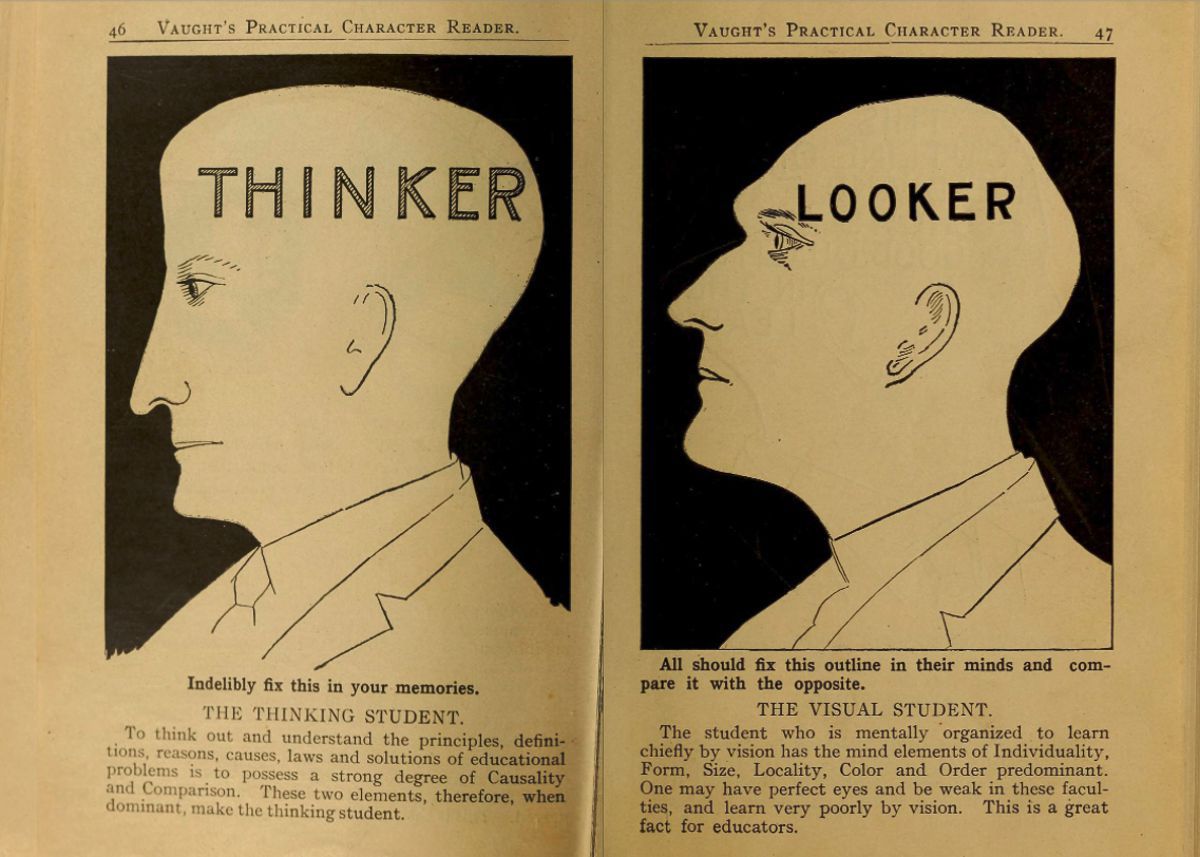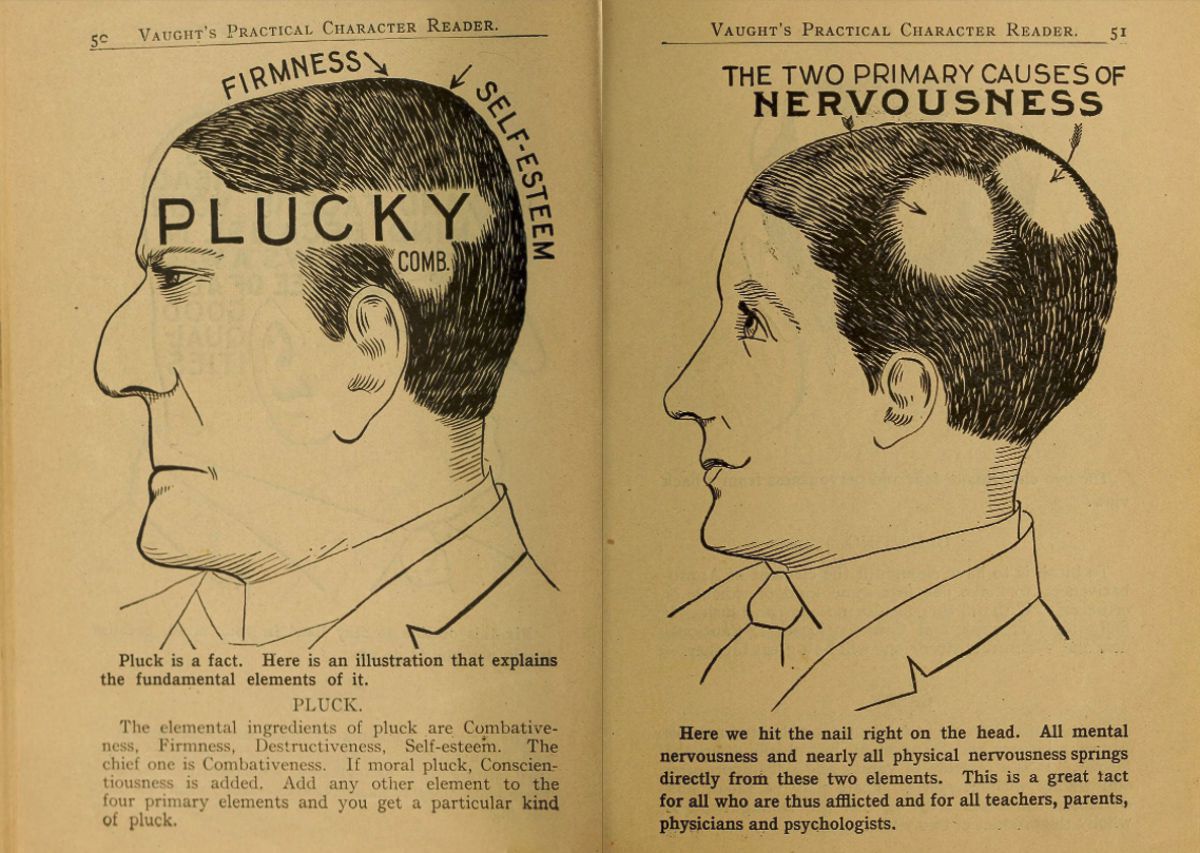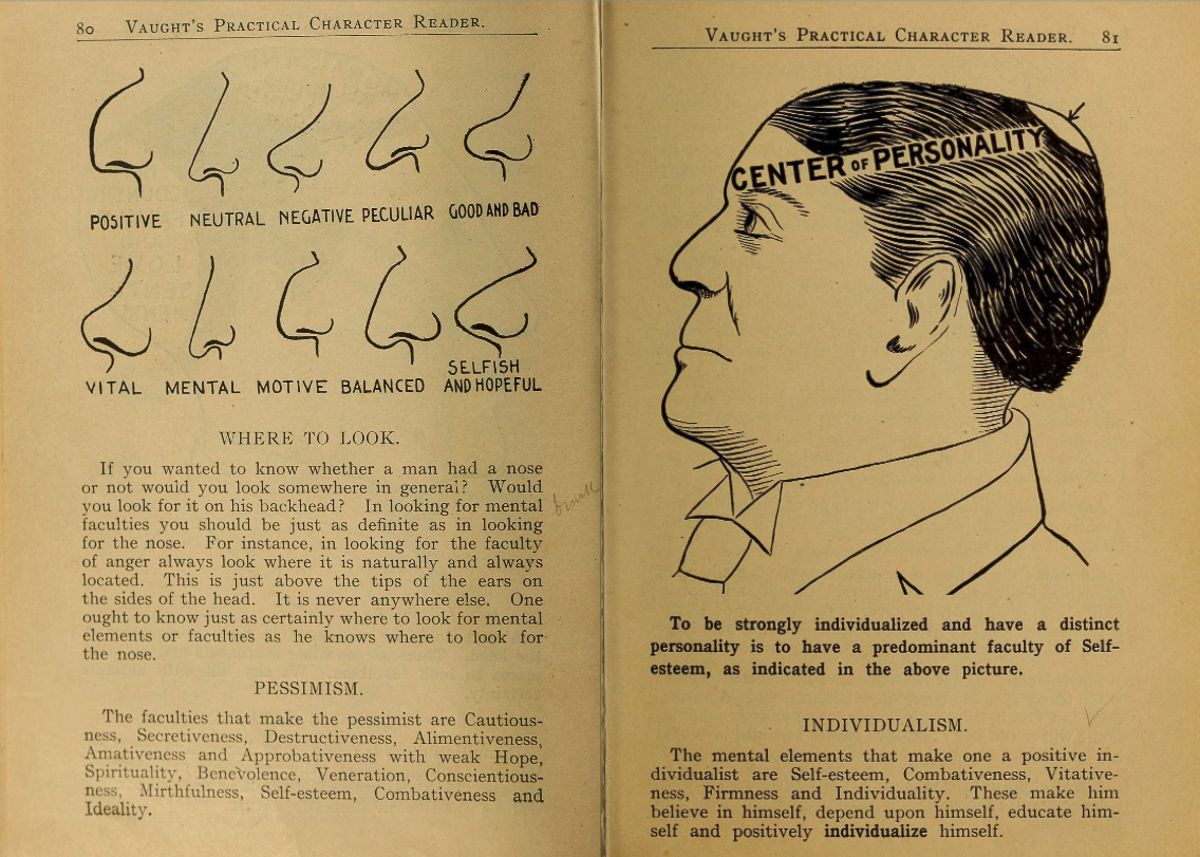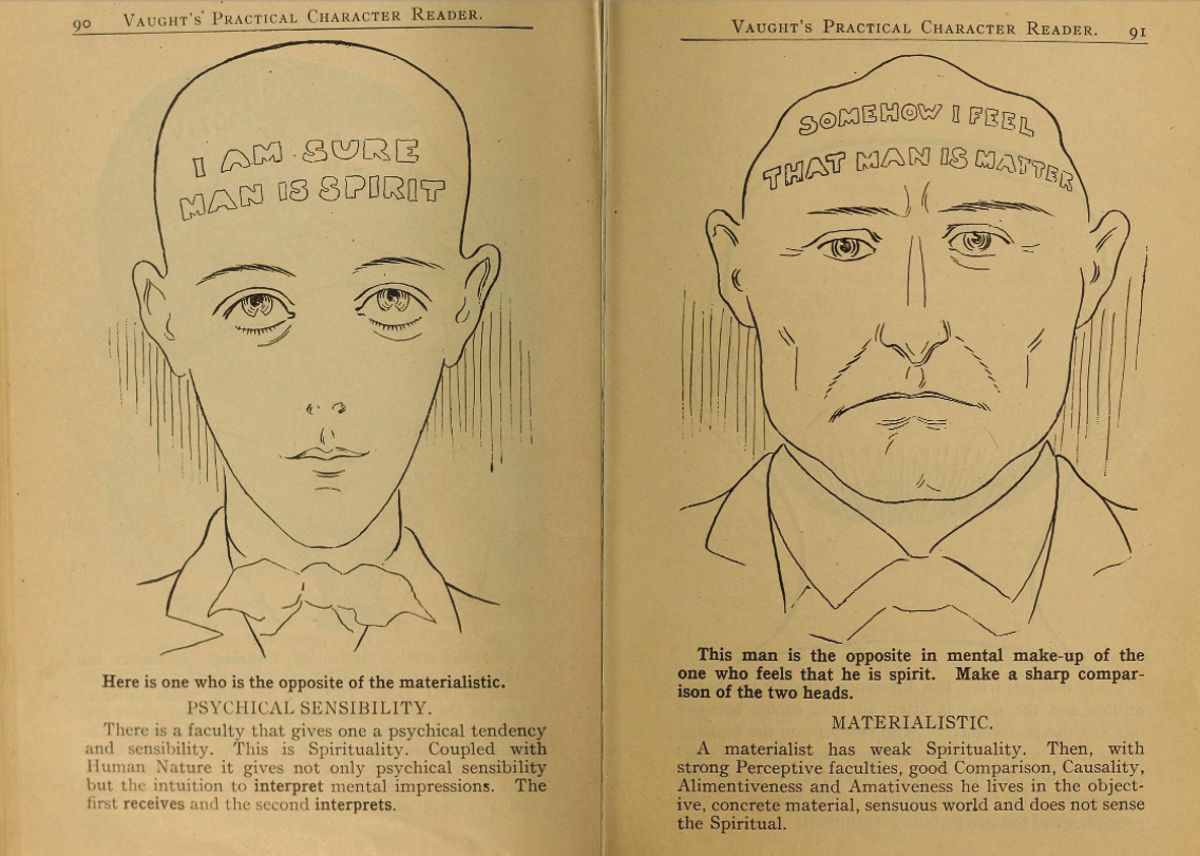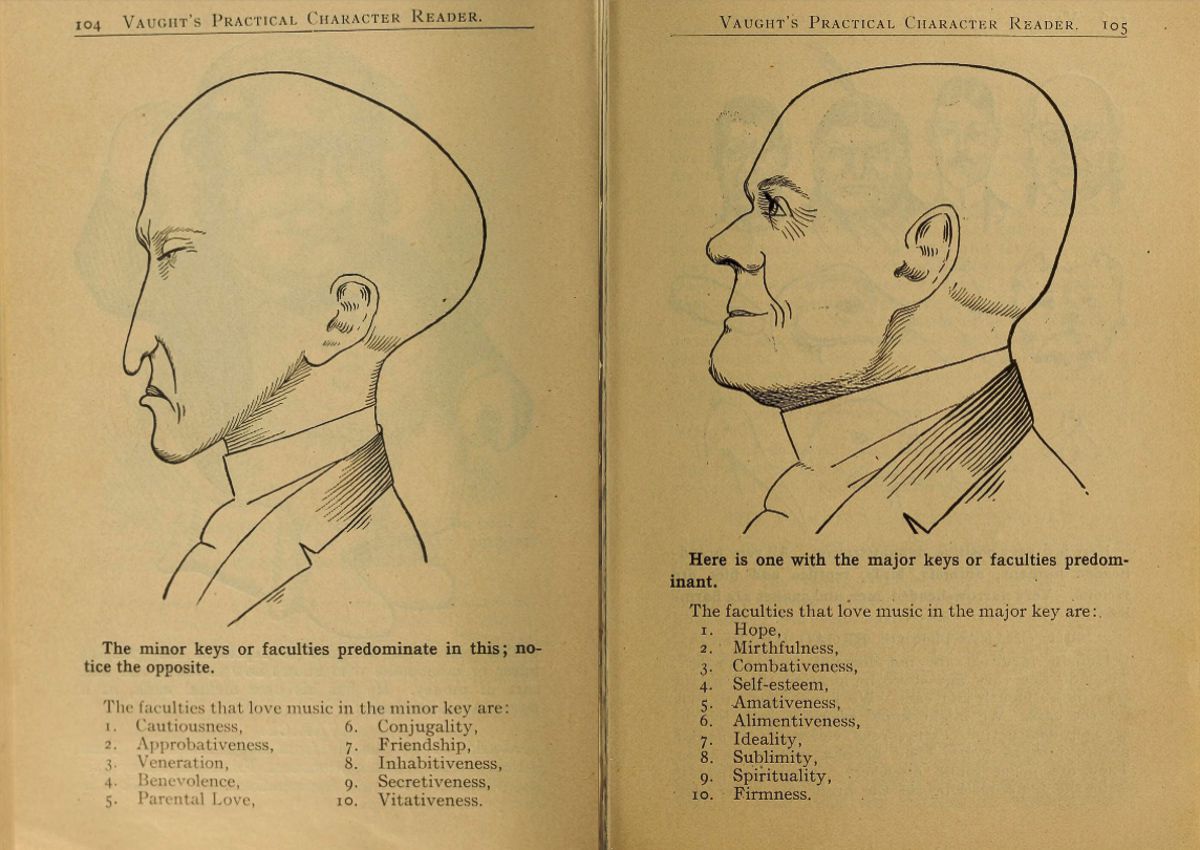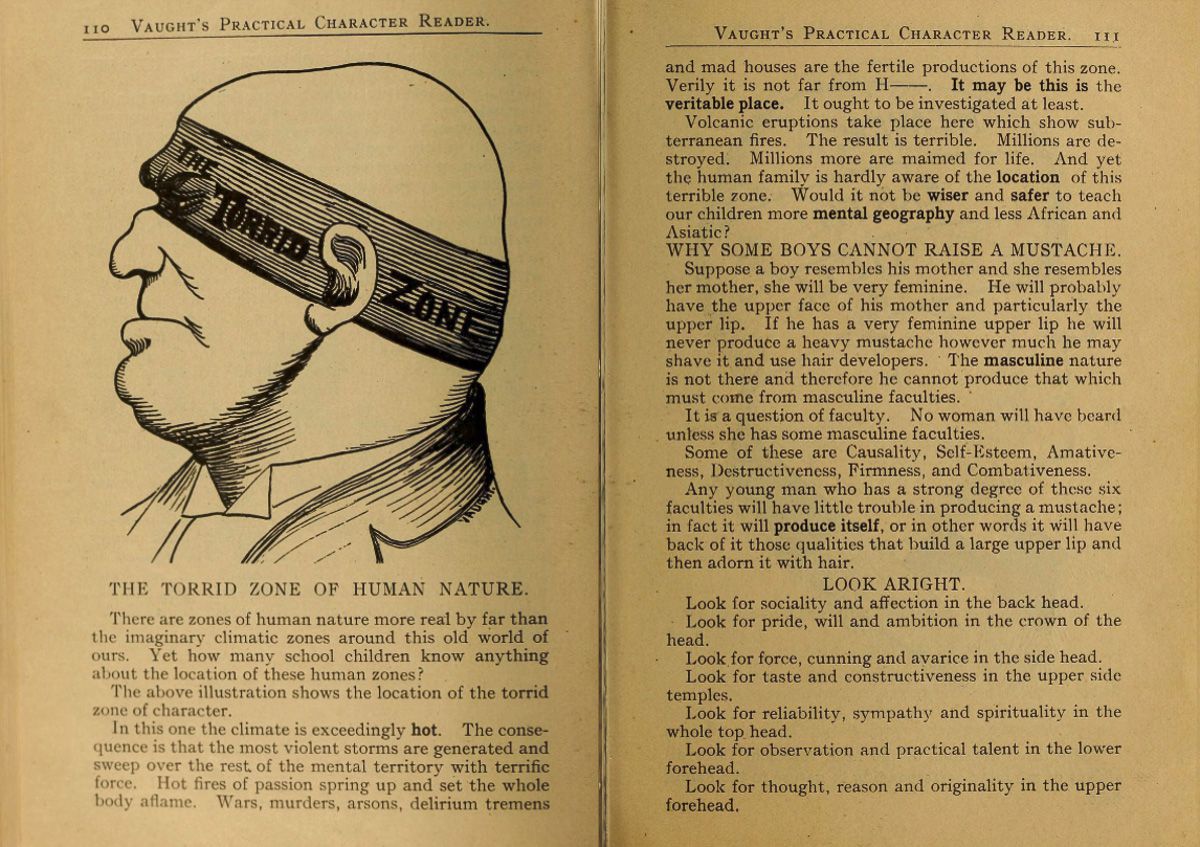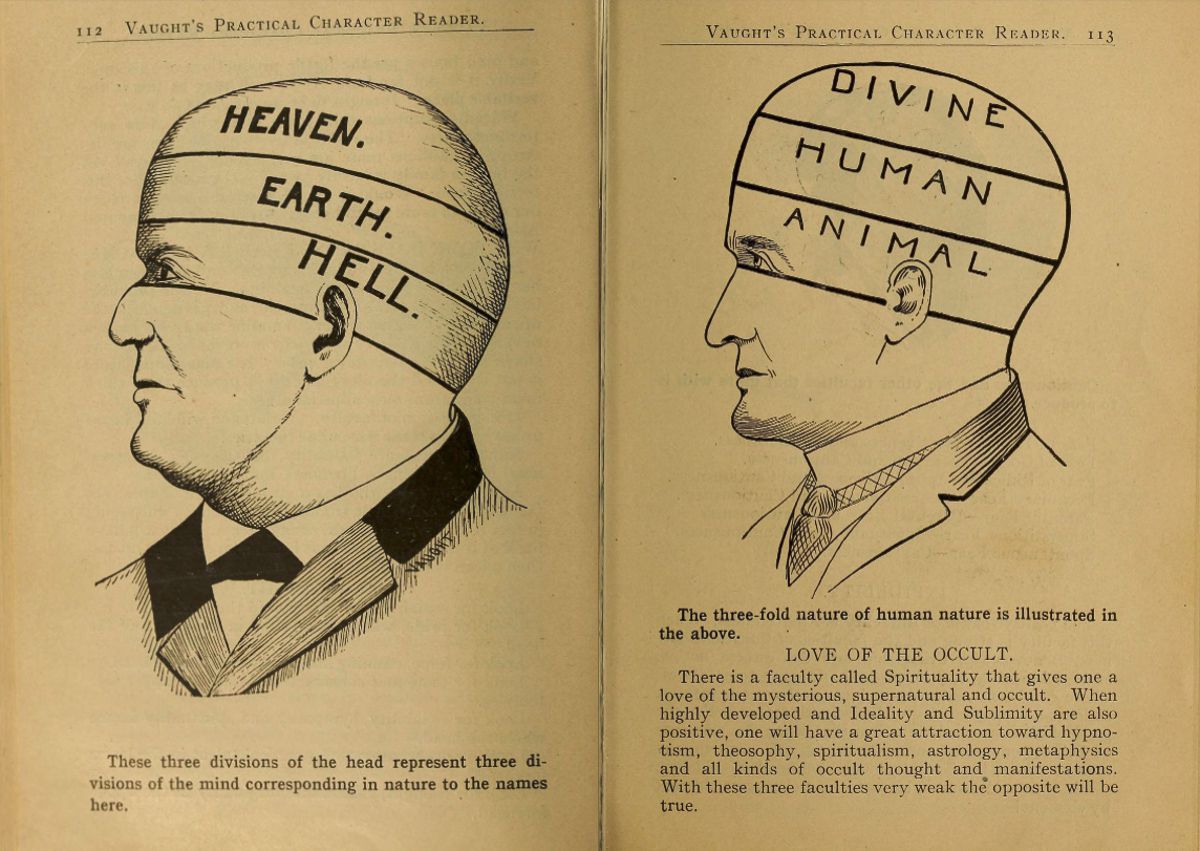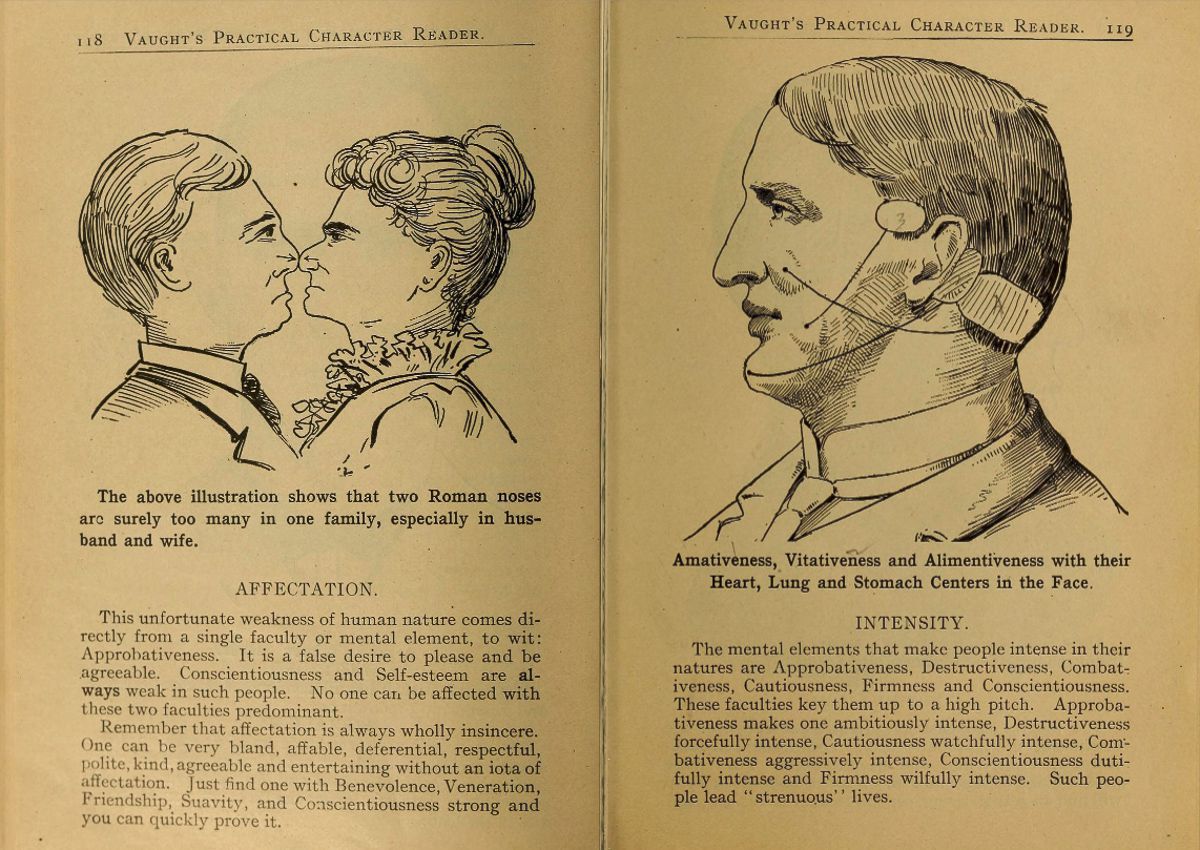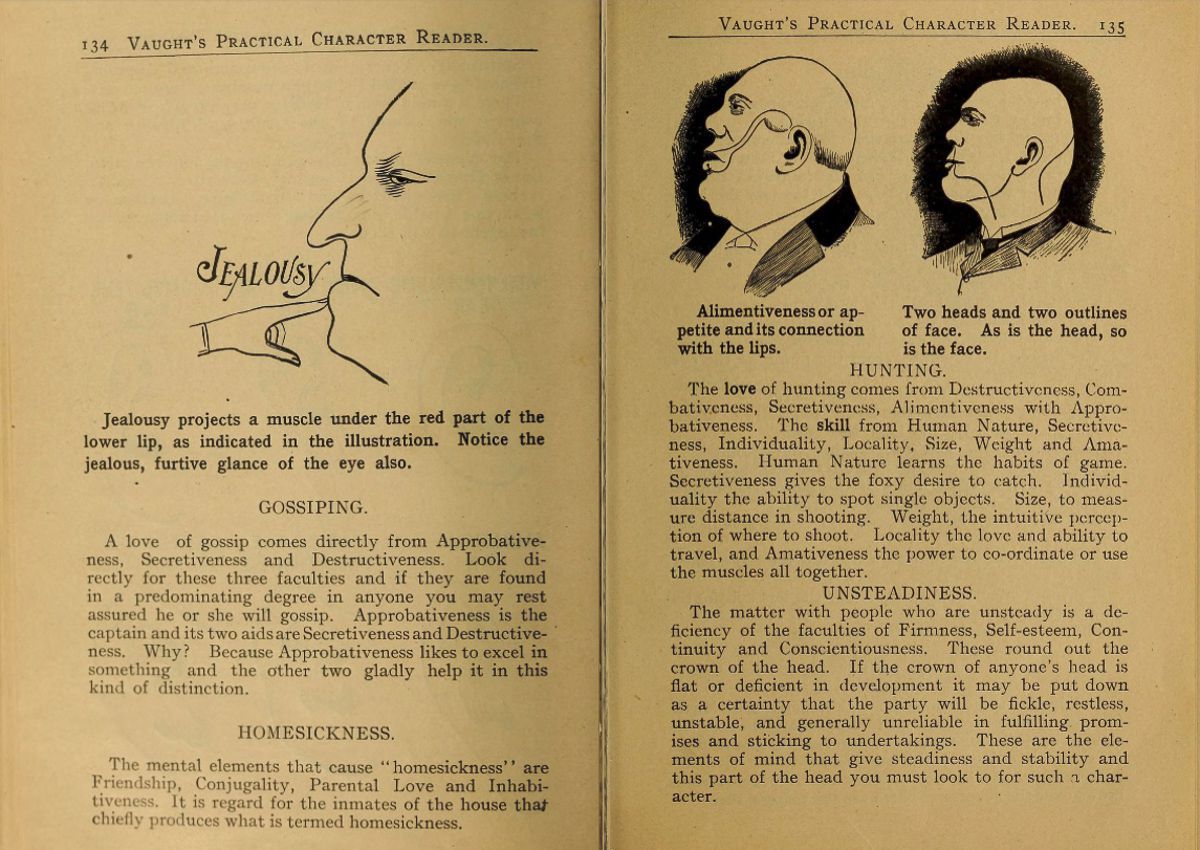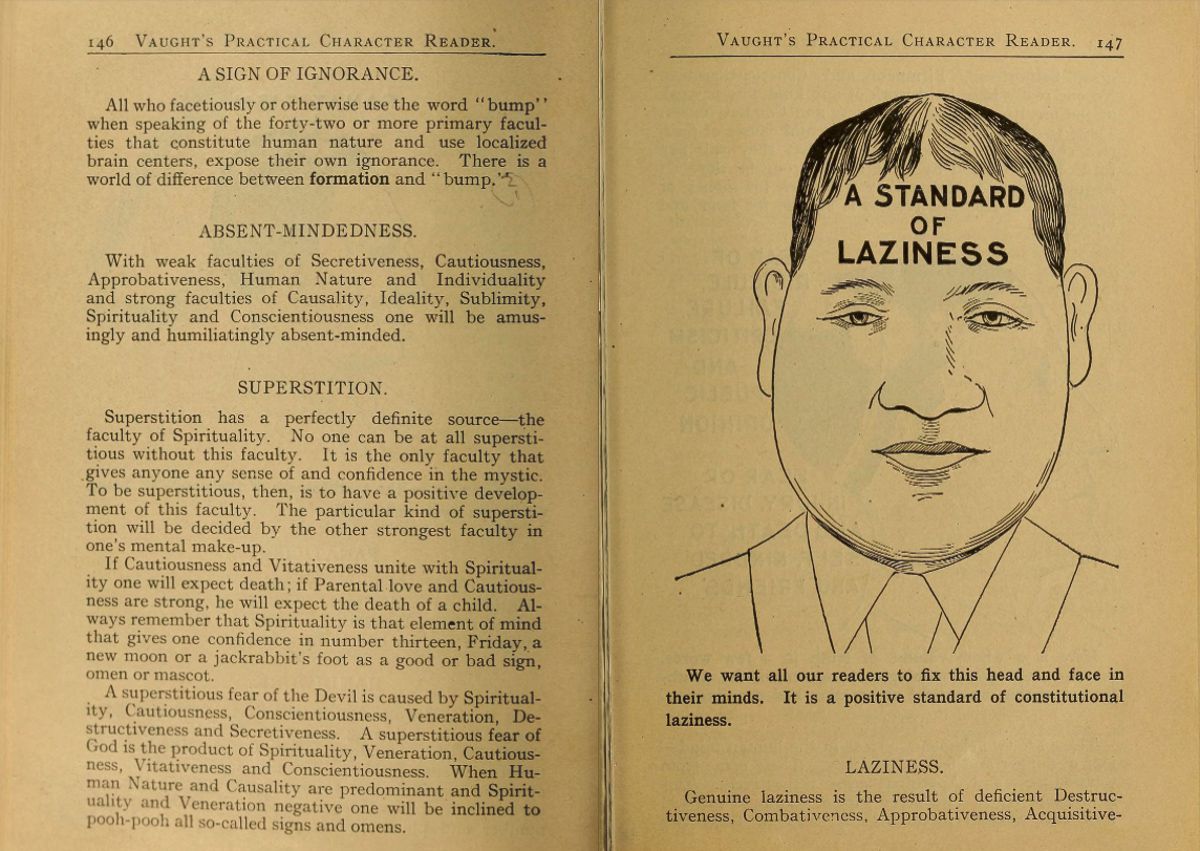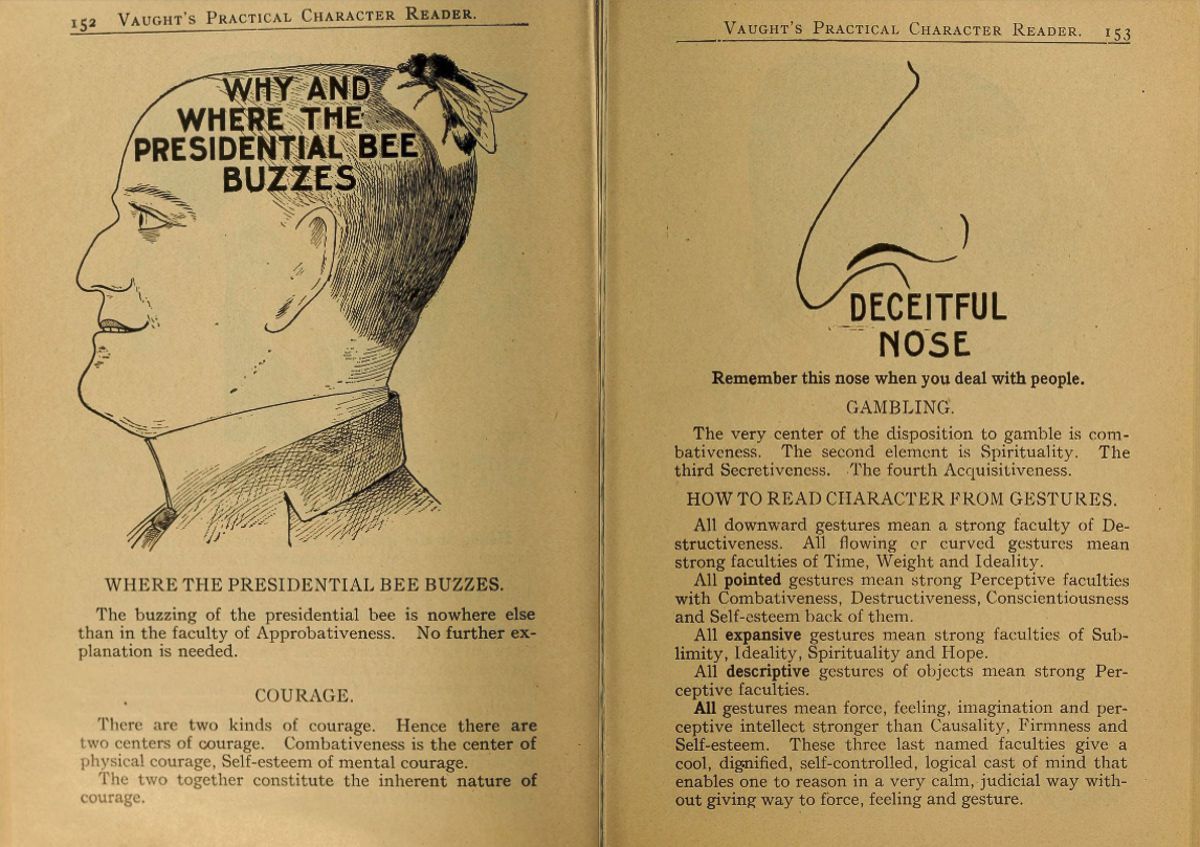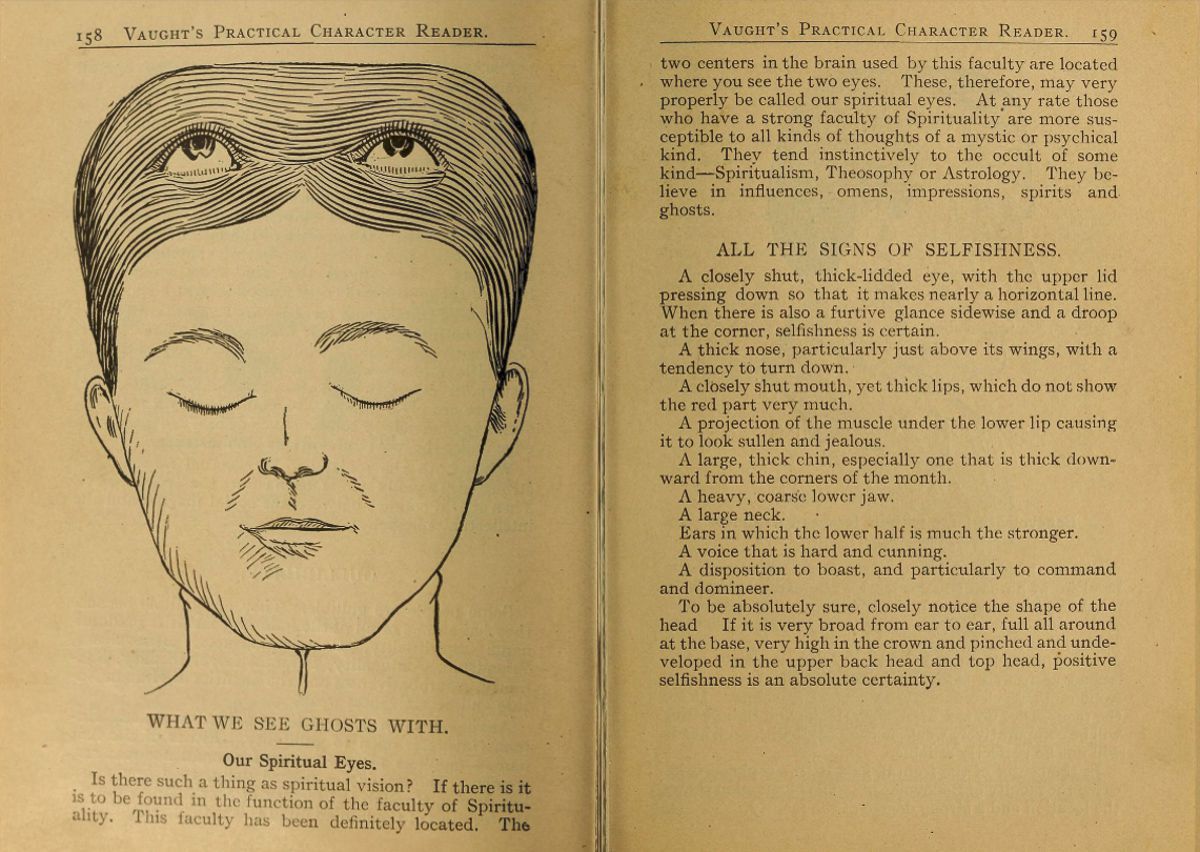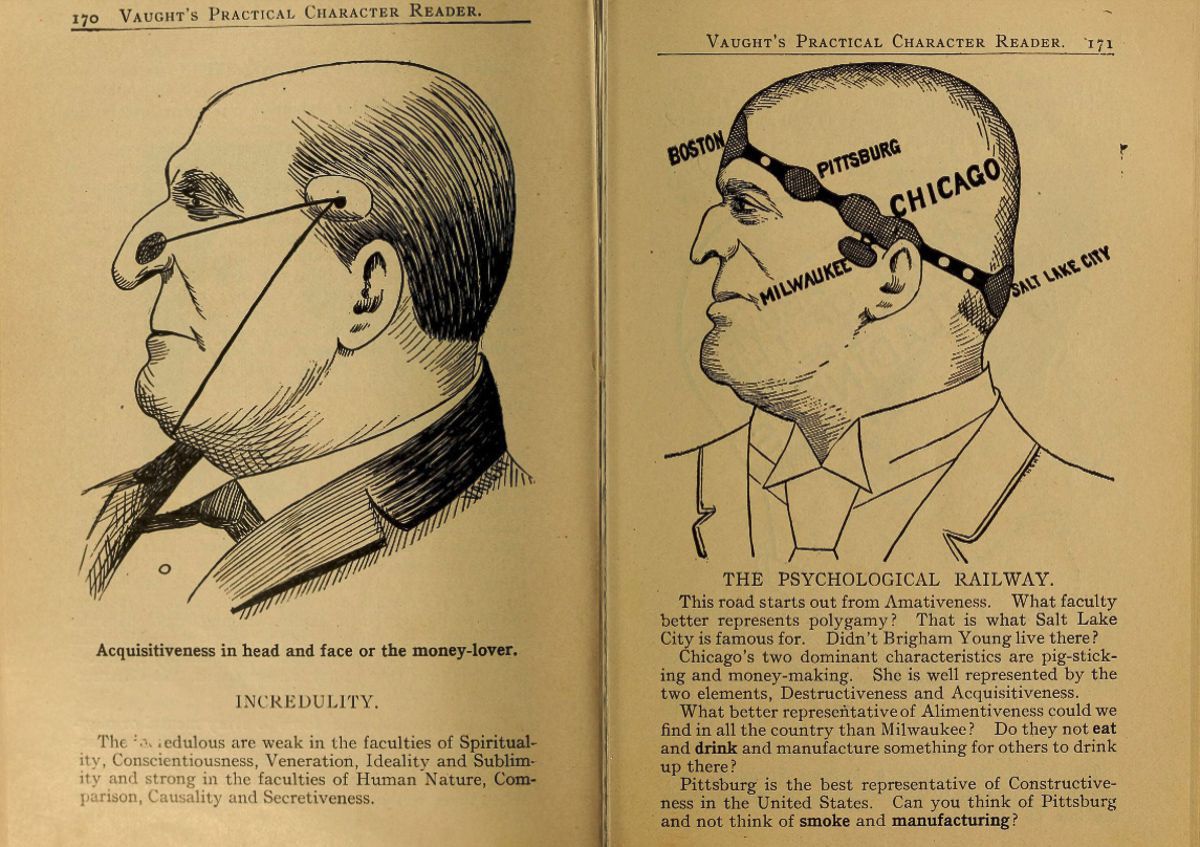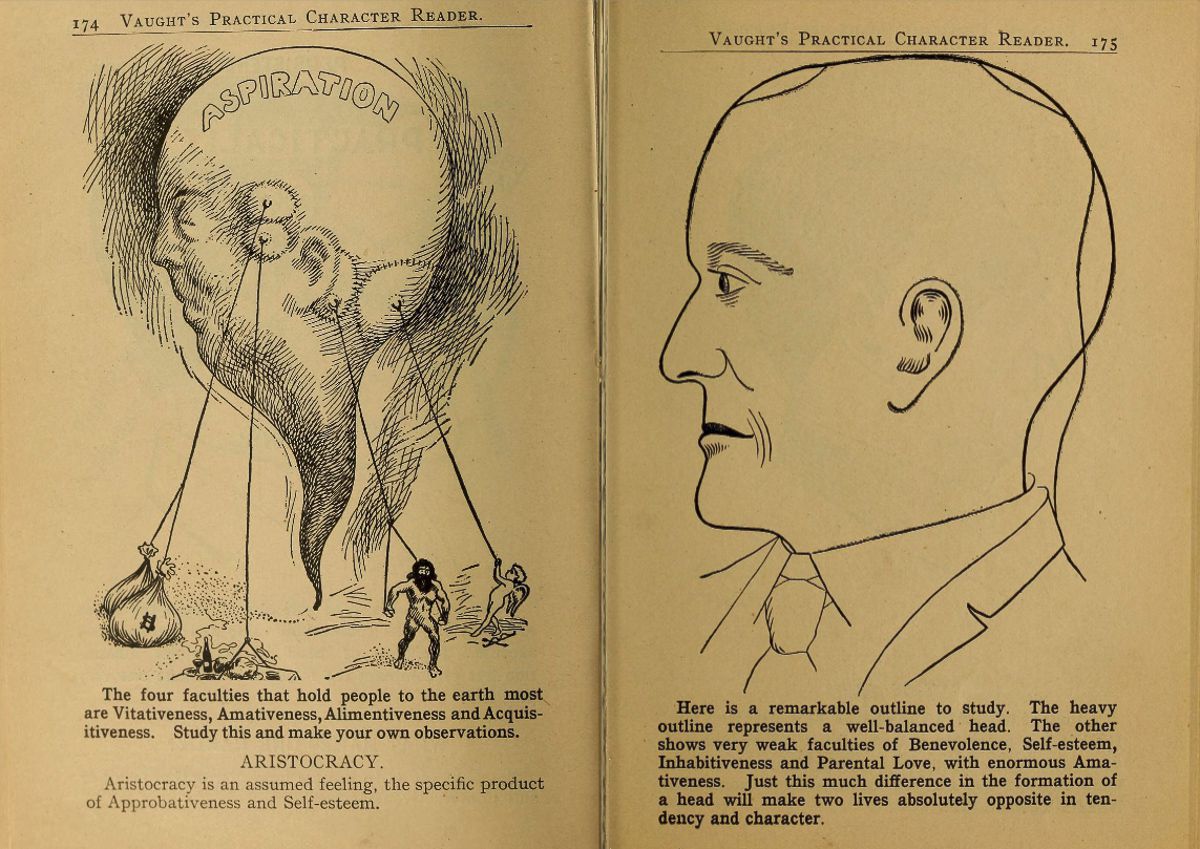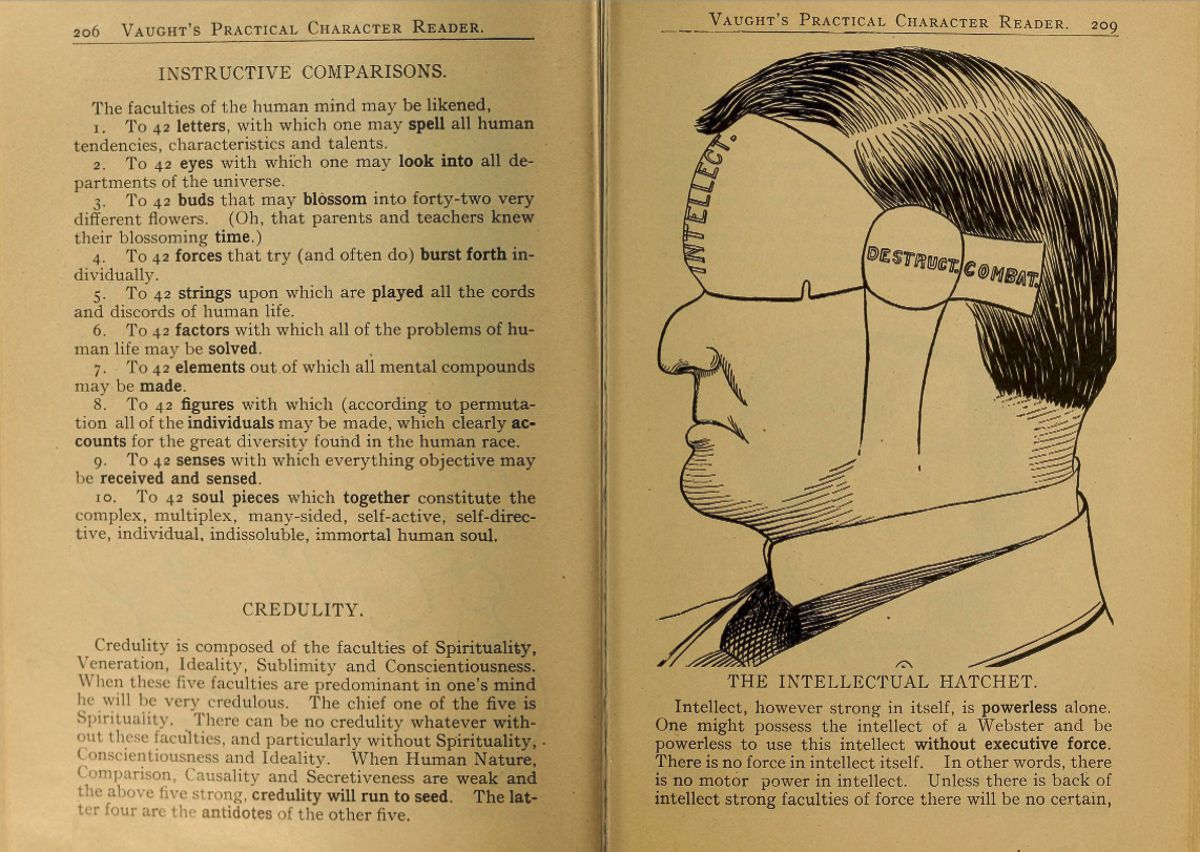Published by Chicago phrenologist L.A. Vaught in 1902, the book lays out the 42 known elements of human nature (including Acquisitiveness, Benevolence, Amativeness, Weight) and how they’re made manifest in people’s heads, noses, ears, and chins. The author confidently states in his Preface: The purpose of this book is to acquaint all with the elements of human nature and enable them to read these elements in all men, women and children in all countries. At least fifty thousand careful examinations have been made to prove the truthfulness of the nature and location of these elements. More than a million observations have been made to confirm the examinations. Therefore, it is given the world to be depended upon. Taken in its entirety it is absolutely reliable. Its facts can be completely demonstrated by all who will take the unprejudiced pains to do so. It is ready for use. It is practical. Use it. Throughout the book, the illustrator provides diagrams and pictures which have cemented the book as a classic in the genre of unintentional humor. Phrenology (from Ancient Greek (phrēn) ‘mind’, and (logos) ‘knowledge’) is a pseudoscience that involves the measurement of bumps on the skull to predict mental traits. It is based on the concept that the brain is the organ of the mind, and that certain brain areas have localized, specific functions or modules. It was said that the brain was composed of different muscles, so those that were used more often were bigger, resulting in the different skull shapes. This led to the reasoning behind why everyone had bumps on the skull in different locations. The brain “muscles” not being used as frequently remained small and were therefore not present on the exterior of the skull. Although both of those ideas have a basis in reality, phrenology generalized beyond empirical knowledge in a way that departed from science. The central phrenological notion that measuring the contour of the skull can predict personality traits is discredited by empirical research. Developed by German physician Franz Joseph Gall in 1796, the discipline was influential in the 19th century, especially from about 1810 until 1840. The principal British center for phrenology was Edinburgh, where the Edinburgh Phrenological Society was established in 1820. Phrenologists believe that the human mind has a set of various mental faculties, each one represented in a different area of the brain. For example, the faculty of “philoprogenitiveness”, from the Greek for “love of offspring”, was located centrally at the back of the head. These areas were said to be proportional to a person’s propensities. The importance of an organ was derived from relative size compared to other organs. It was believed that the cranial skull—like a glove on the hand—accommodates to the different sizes of these areas of the brain, so that a person’s capacity for a given personality trait could be determined simply by measuring the area of the skull that overlies the corresponding area of the brain. Phrenology, which focuses on personality and character, is distinct from craniometry, which is the study of skull size, weight and shape, and physiognomy, the study of facial features. Franz Joseph Gall believed that the brain was made up of 27 individual organs that determined personality, the first 19 of these ‘organs’ he believed to exist in other animal species. Phrenologists would run their fingertips and palms over the skulls of their patients to feel for enlargements or indentations. The phrenologist would often take measurements with a tape measure of the overall head size and more rarely employ a craniometer, a special version of a caliper. In general, instruments to measure the sizes of cranium continued to be used after mainstream phrenology had ended. The phrenologists put emphasis on using drawings of individuals with particular traits, to determine the character of the person and thus many phrenology books show pictures of subjects. From absolute and relative sizes of the skull the phrenologist would assess the character and temperament of the patient. Gall’s list of the “brain organs” was specific. An enlarged organ meant that the patient used that particular “organ” extensively. The number—and more detailed meanings—of organs were added later by other phrenologists. The 27 areas varied in function, from sense of color, to religiosity, to being combative or destructive. Each of the 27 “brain organs” was located under a specific area of the skull. As a phrenologist felt the skull, he would use his knowledge of the shapes of heads and organ positions to determine the overall natural strengths and weaknesses of an individual. Phrenologists believed the head revealed natural tendencies but not absolute limitations or strengths of character. The first phrenological chart gave the names of the organs described by Gall; it was a single sheet, and sold for a cent. Later charts were more expansive. Phrenology is today recognized as pseudoscience. The methodological rigor of phrenology was doubtful even for the standards of its time since many authors already regarded phrenology as pseudoscience in the 19th century. There have been various studies conducted that discredited phrenology, most of which were done with ablation techniques. Marie-Jean-Pierre Flourens demonstrated through ablation that the cerebrum and cerebellum accomplish different functions. He found that the impacted areas never carried out the functions that were proposed through pseudoscience, phrenology. However, Paul Broca was the one who demolished the idea that phrenology was a science when he discovered and named the “Broca’s area”. The patient’s ability to produce language was lost while their ability to understand language remained intact. Through an autopsy examining their brains, he found that there was damage to the left frontal lobe. He concluded that this area of the brain was responsible for language production. Between Flourens and Broca, the claims to support phrenology were dismantled.
(Photo credit: Library of Congress / Mashable / Wikimedia Commons). Notify me of new posts by email.
Δ Subscribe





